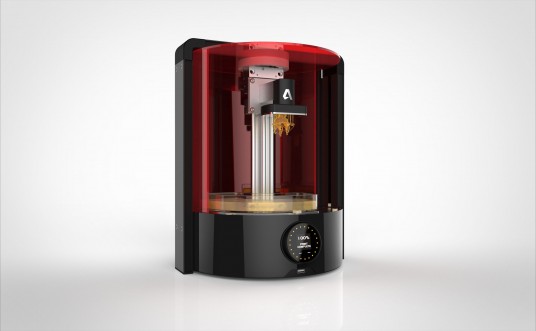Introducing a new software platform and a reference design for a 3D printer, Autodesk wants to shake things up in 3D printing the way Google shook up the smartphone market.
Today Autodesk jumped with both feet into the 3D printing industry, with a software platform meant to simplify connecting CAD to printers, and a reference design for a 3D printer it will build and also make available to others. The move is strongly reminiscent of how Google changed the direction of the smartphone market, with the release of the free Android operating system and manufacturing of smartphones to give other manufacturers a better idea of could be done with an open source alternative to Apple’s iOS.

In a corporate blog post, an exclusive interview with the Wall Street Journal, and a presentation at a Silicon Valley event, Autodesk CEO Carl Bass described the conflict Autodesk sees. “I’ve been fascinated by the promise and frustrated by the reality of 3D printing” he said in the corporate blog post.
Standardizing 3D printing software
Autodesk says Spark, their forthcoming 3D printing software platform, will “connect digital information to 3D printers in a new and streamlined way, making it easier to visualize prints and optimize them without trial and error, while also broadening the range of materials that can be used for printing.” Spark will be an open software platform which Autodesk will share, hoping the new platform will make it easier for hardware manufacturers, software developers, materials scientists, and others to advance 3D printing.
The industry standard today for sending 3D printing data from the computer to the printer is STL, short for STereoLithography. The STL file format was developed by 3D Systems for the first generation of 3D printers, which used a printing method also called stereolithography but often abbreviated as SLA. STL files only describe the surface geometry of a three-dimensional object, without representation of color, material, texture or other attributes that can be created in 3D CAD. STL also lacks scale information, and the units are arbitrary. For years 3D printer manufacturers and software vendors alike have been writing custom software drivers to match CAD programs and 3D printers, to improve upon STL. The current state of 3D printing is similar to the early days of 2D printers for computers, where every computer manufacturer and every software vendor had to write customer drivers for printing, until Microsoft introduced standardization. Autodesk did not provide technical specifics with today’s announcements, but it has to be assumed Spark will address all the limitations of STL.
A 3D printer reference design
The yet-unnamed 3D printer will be built by Autodesk and the design will be made public. The printer will “serve as a reference implementation for Spark. It will demonstrate the power of the Spark platform and set a new benchmark for the 3D printing user experience,” Bass said in his blog post. The new printer will be designed to work with materials from unaffiliated suppliers; today the materials used in most 3D printers can only be purchased from the hardware manufacturer. The expected price range of the new printer is $5,000—a price that targets professional users, not the hobbyist “maker” market.
Autodesk’s printer will use stereolithography, an older method of producing 3D printed objects layer by layer. Several key SLA patents have recently expired, making it easier for Autodesk to create a reference design it intends to give away.
What do we think?
Autodesk is piling dynamite on the fault lines underneath the 3D printing industry to see what can be shaken. But the CAD leader is not alone. As we have reported before, Microsoft has added a 3D printing API to Windows 8.1, a move Autodesk immediately supported.
Just as Google makes nothing off Android but makes a fortune because others use it, Autodesk intends to make money by goosing innovation in 3D printing, and then selling more CAD software to support it.





